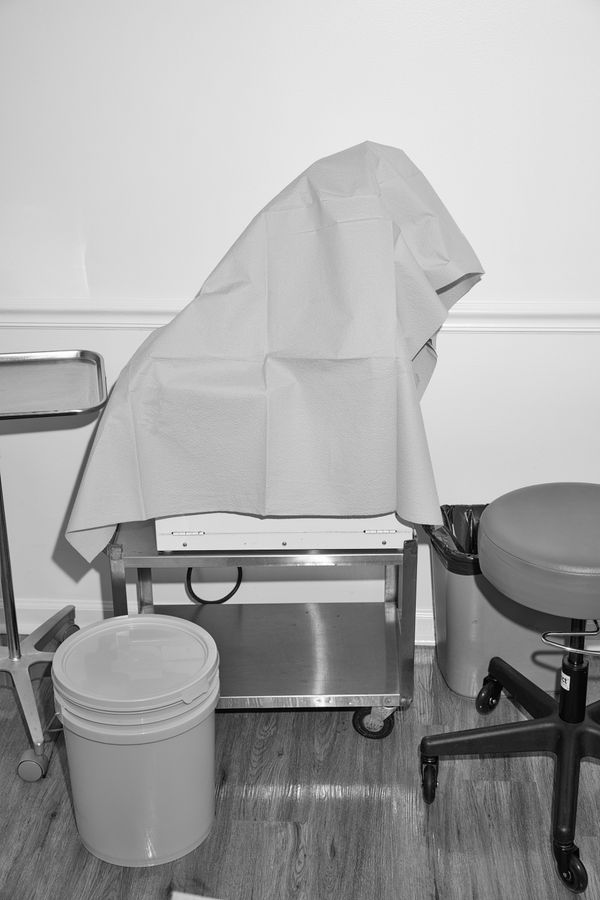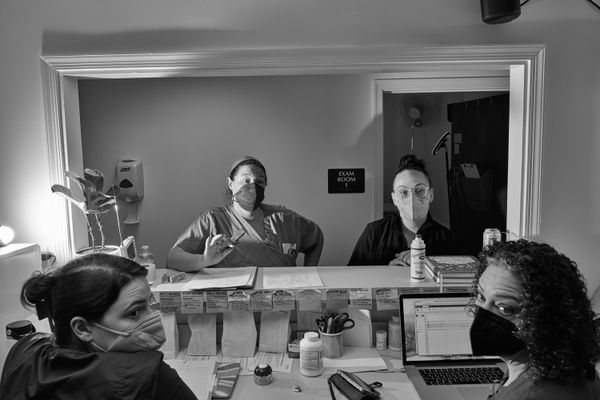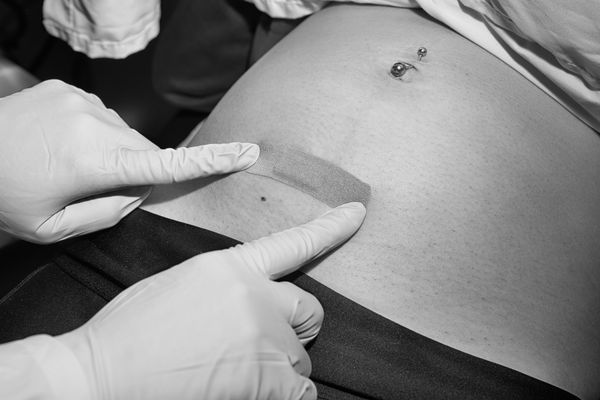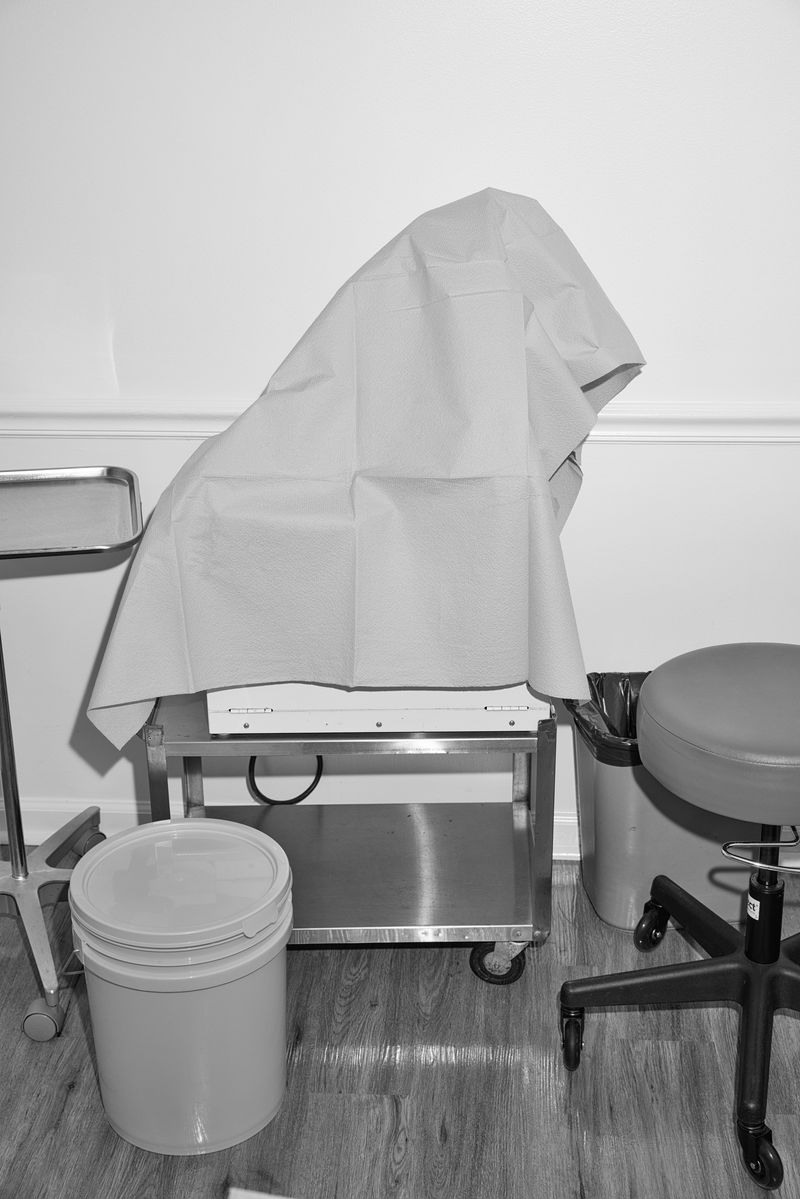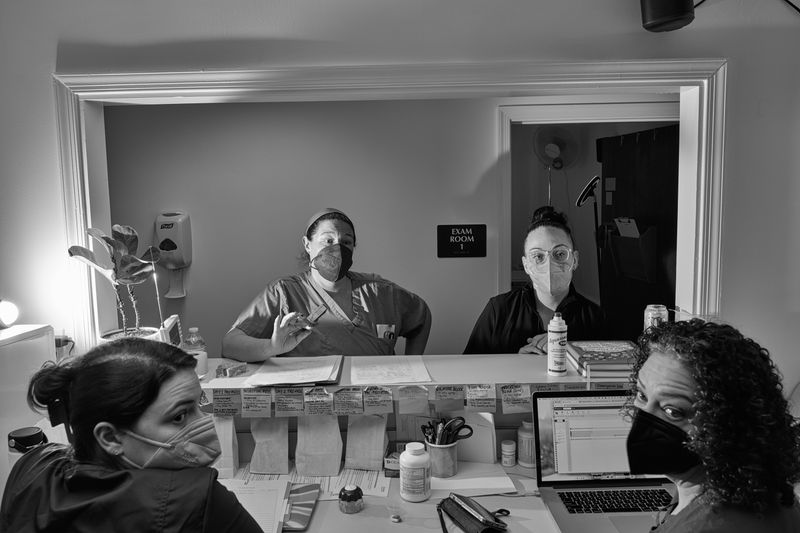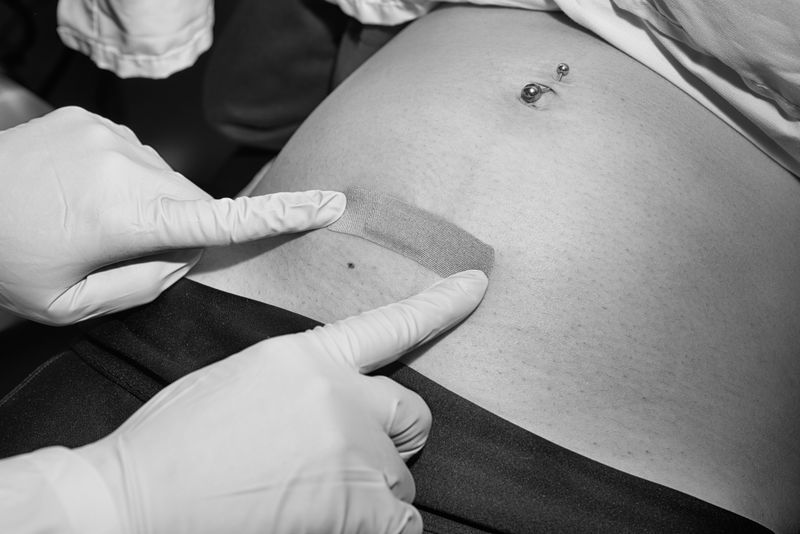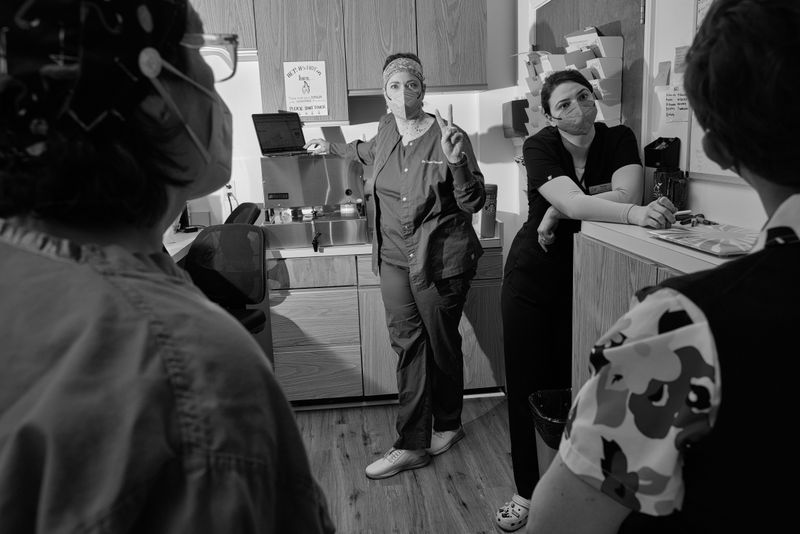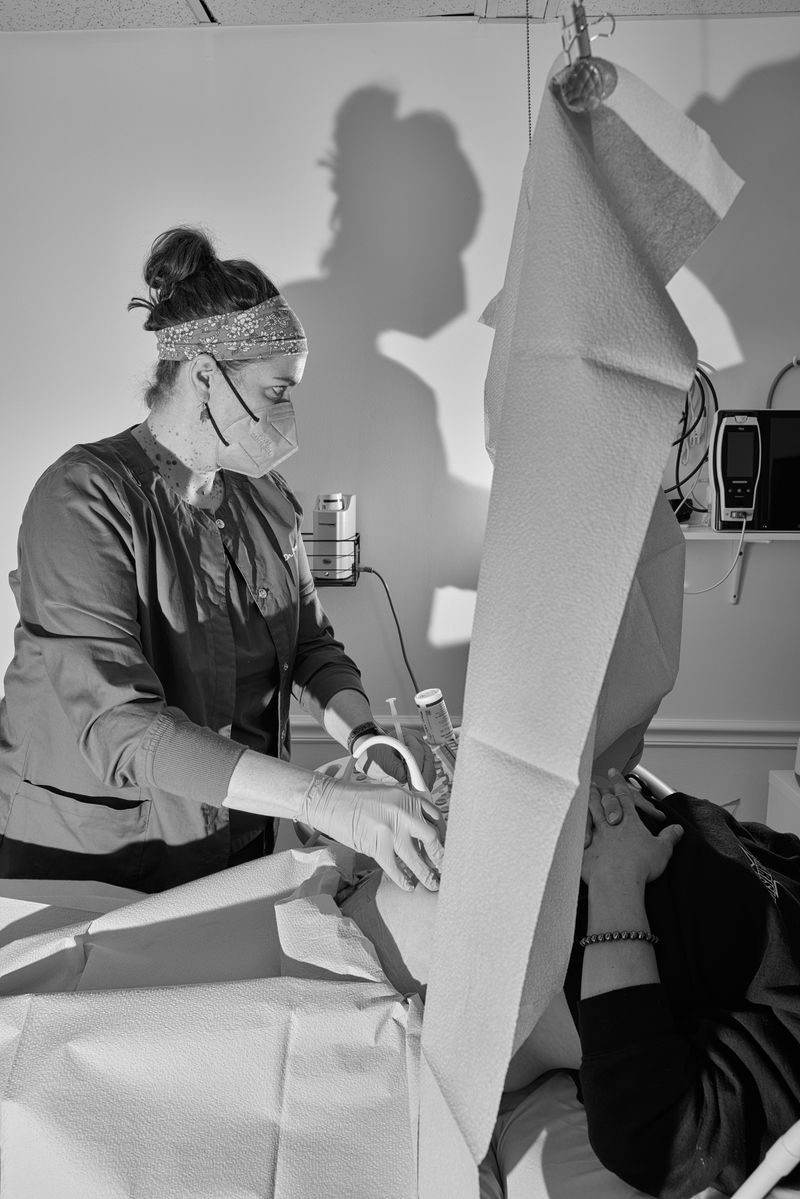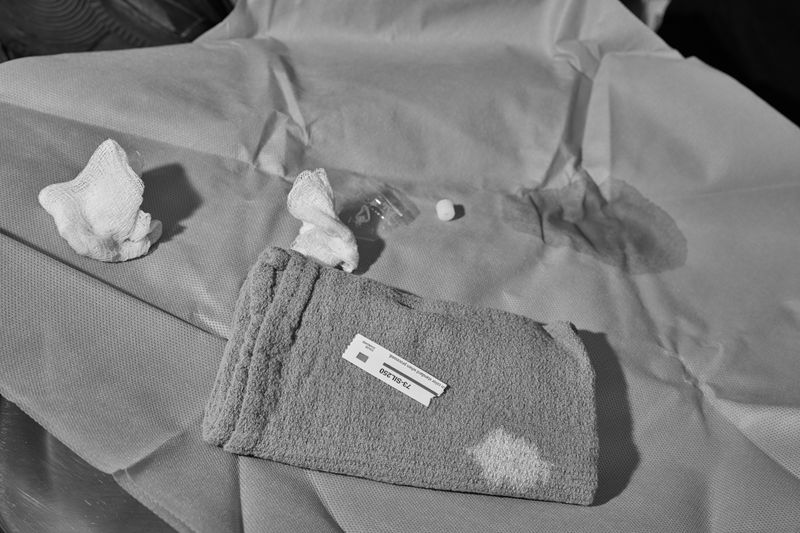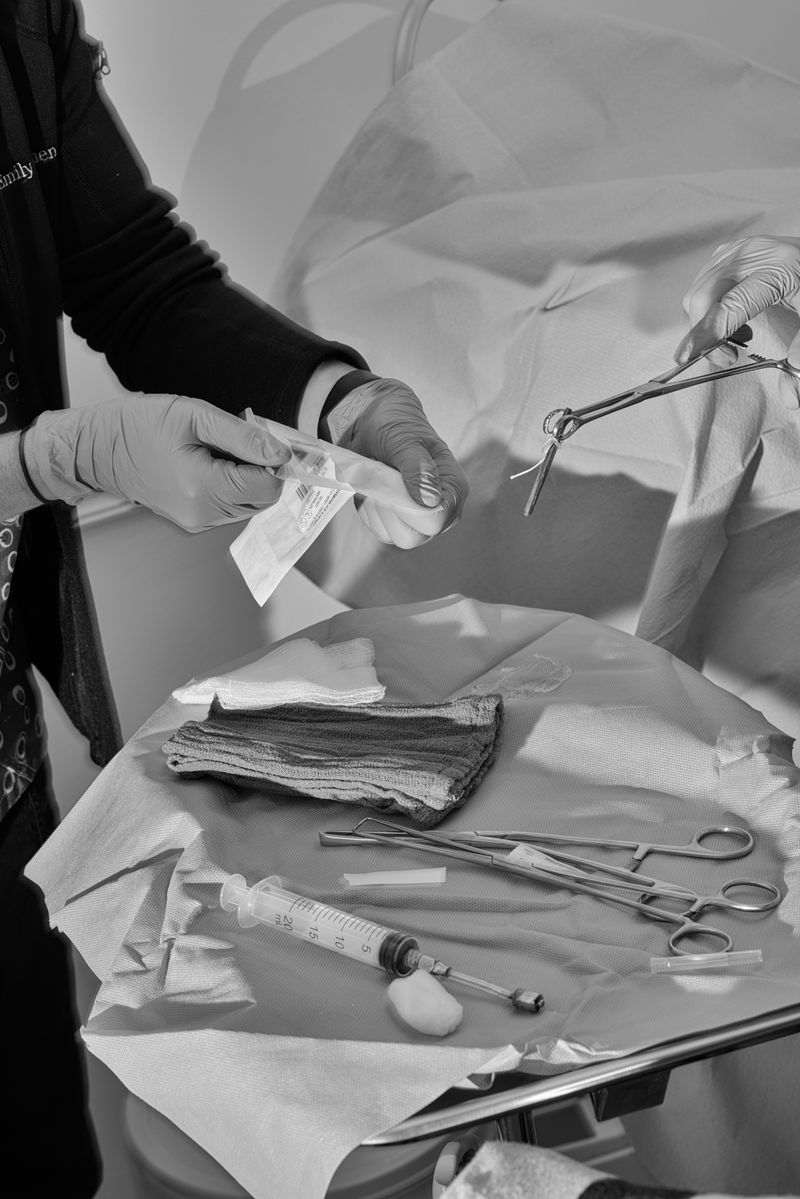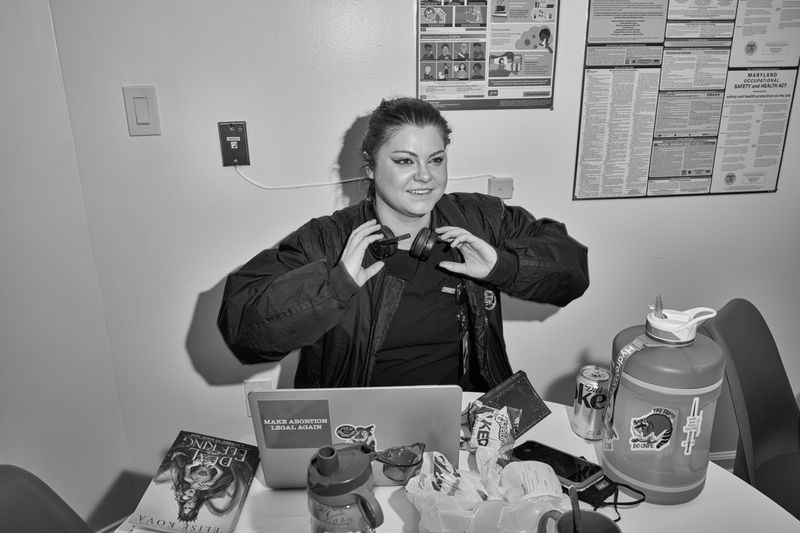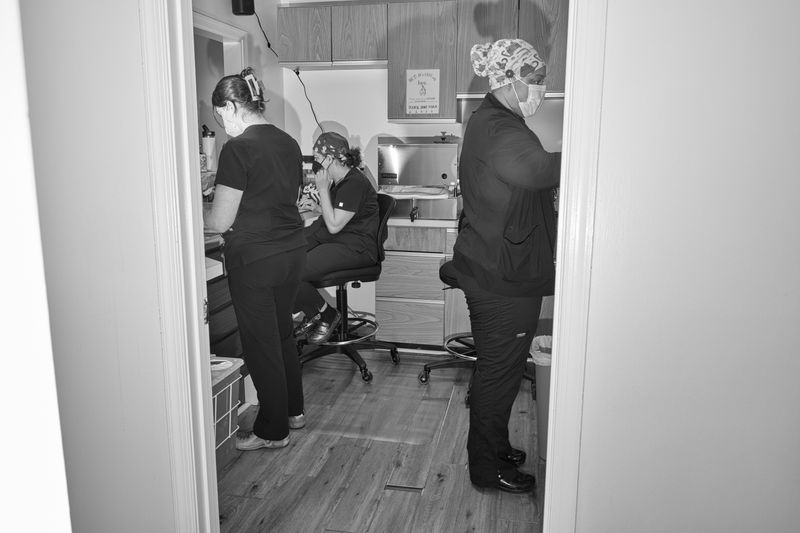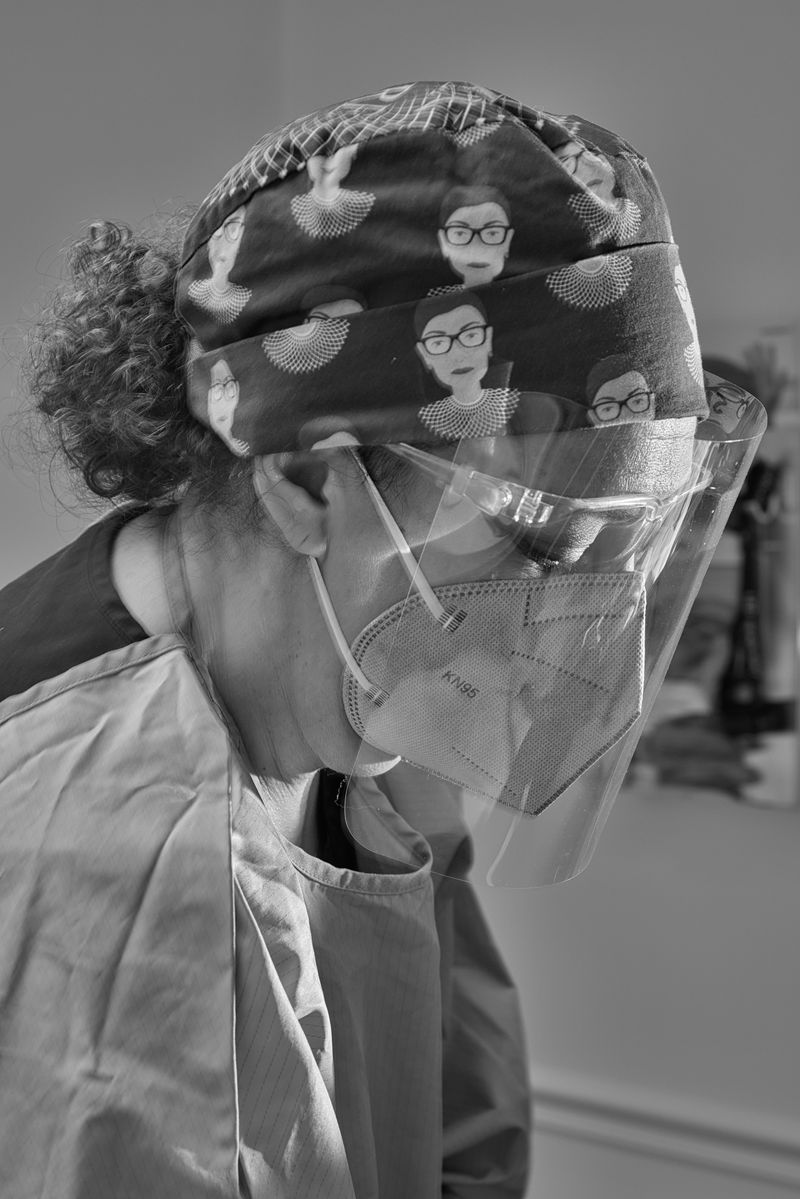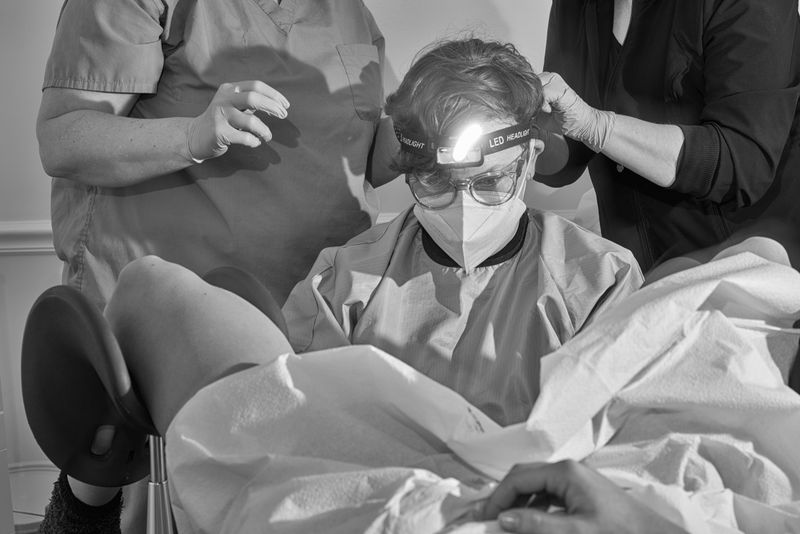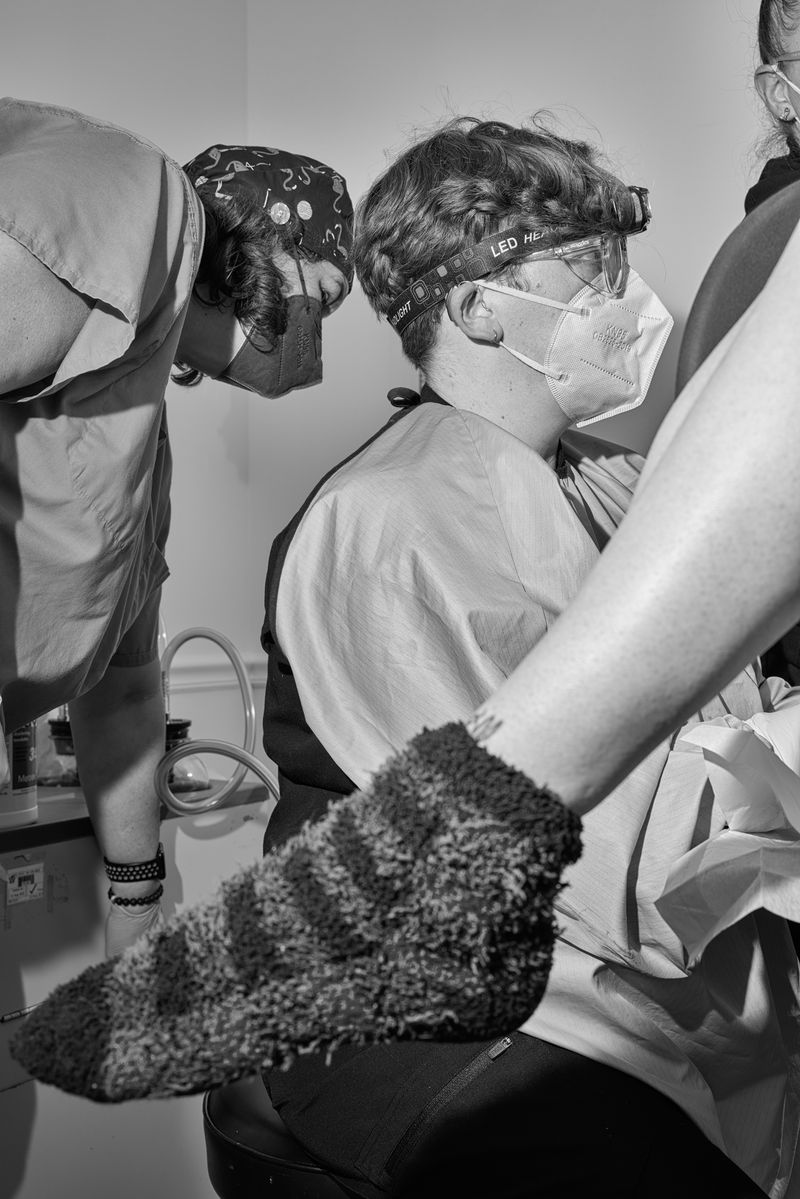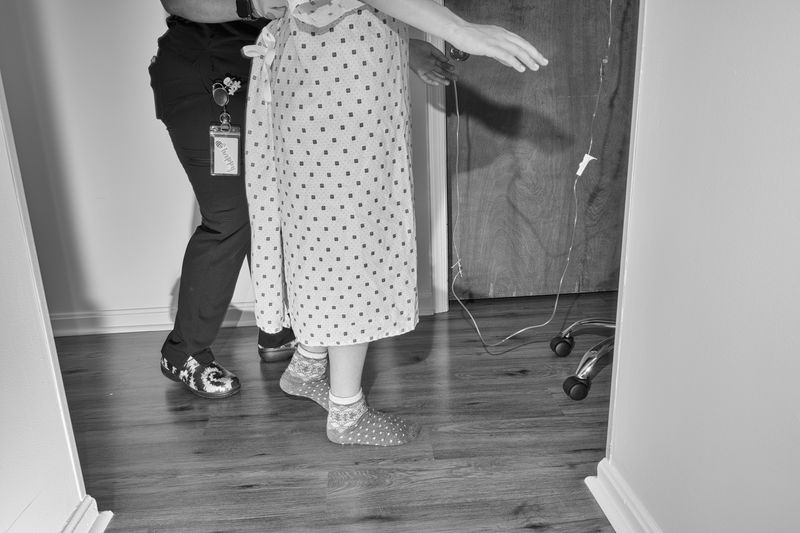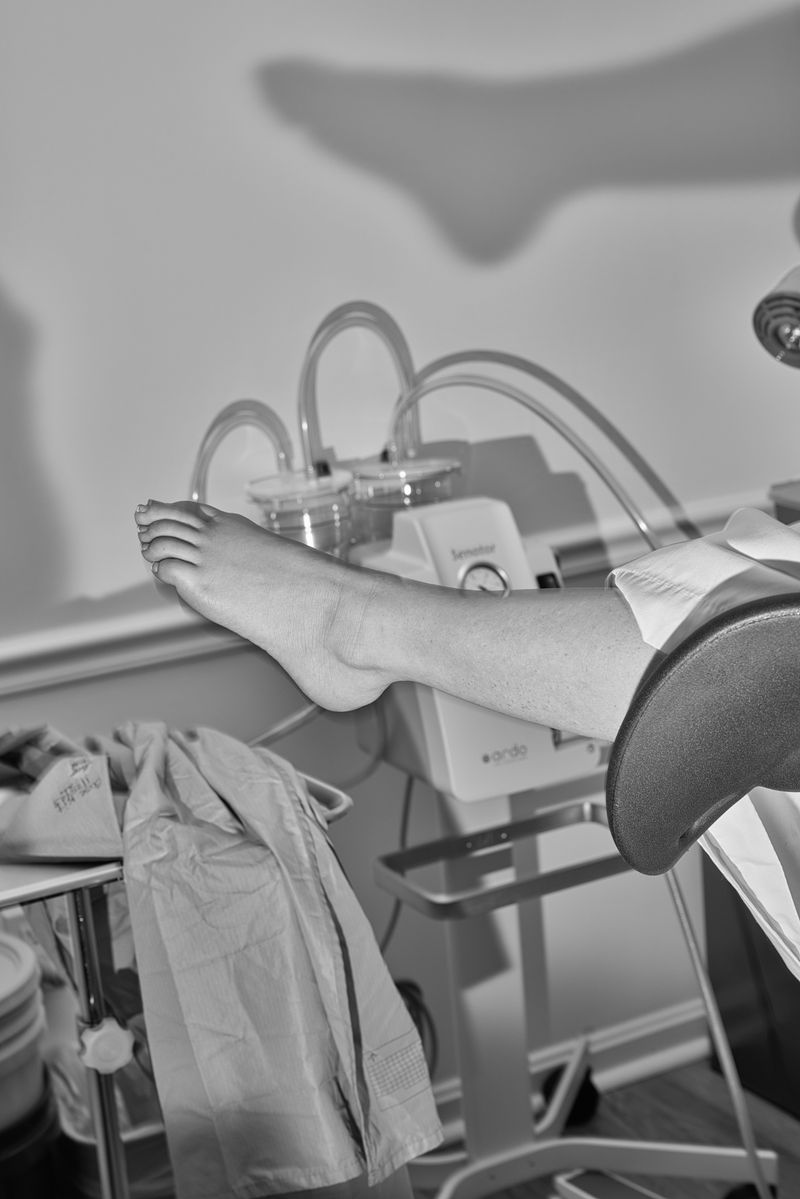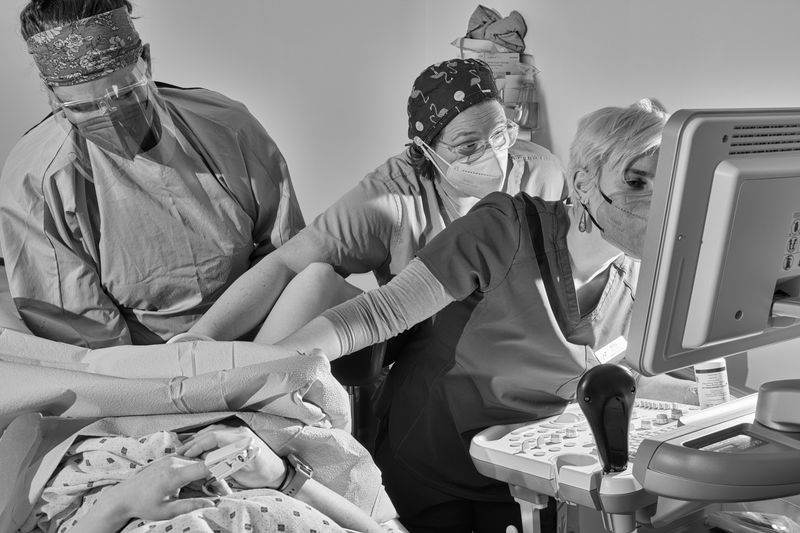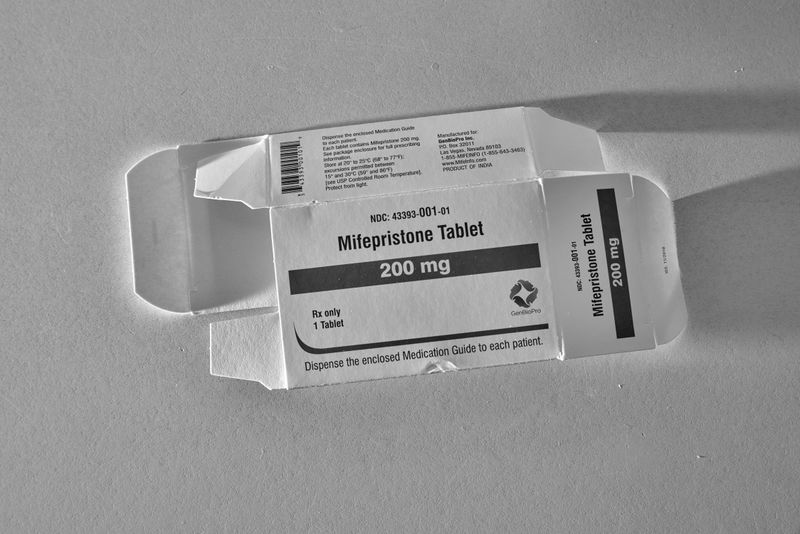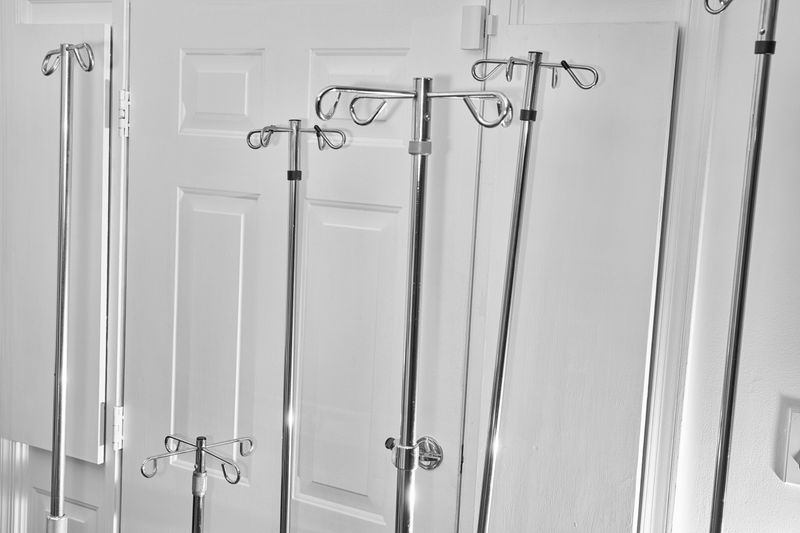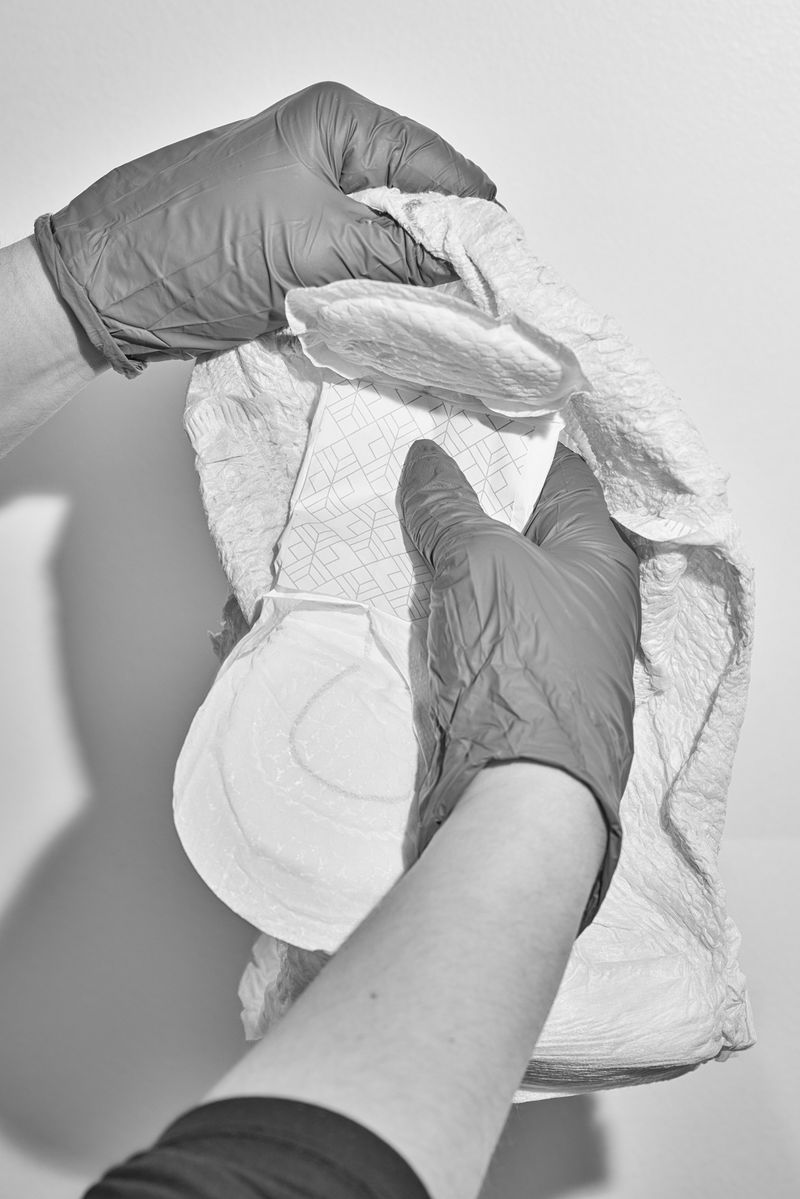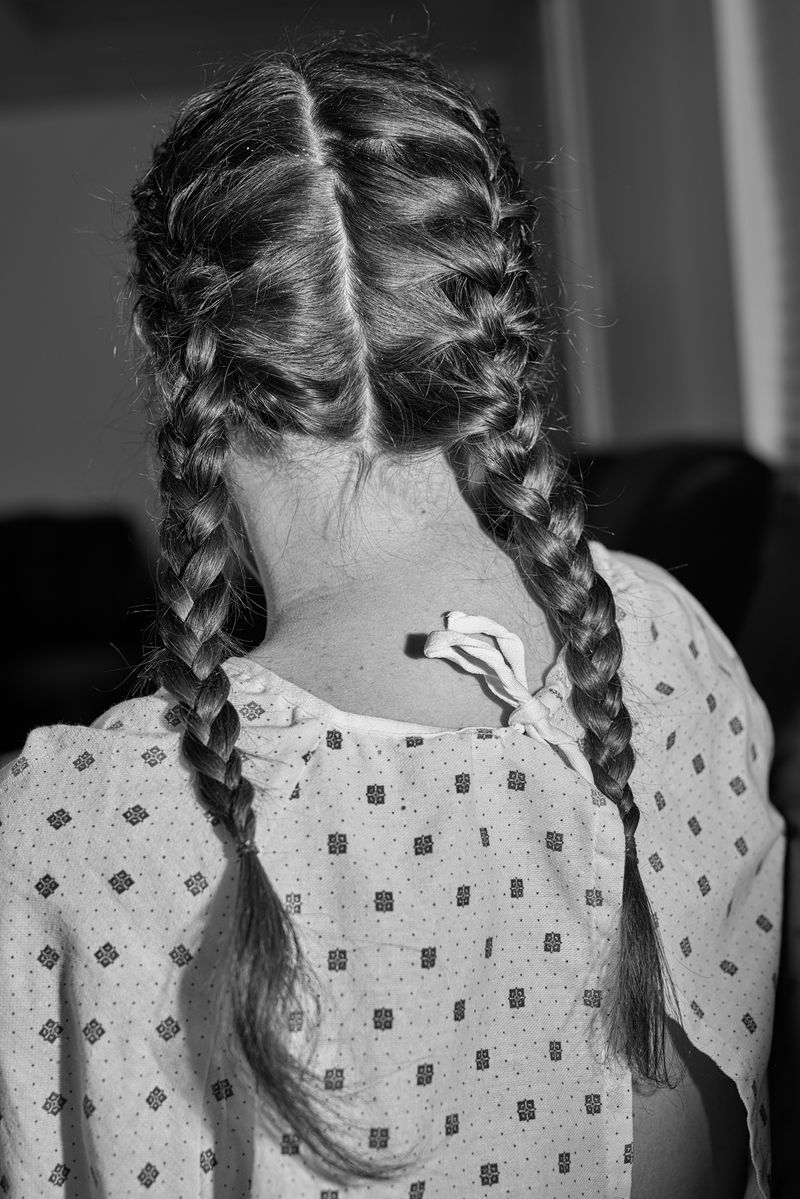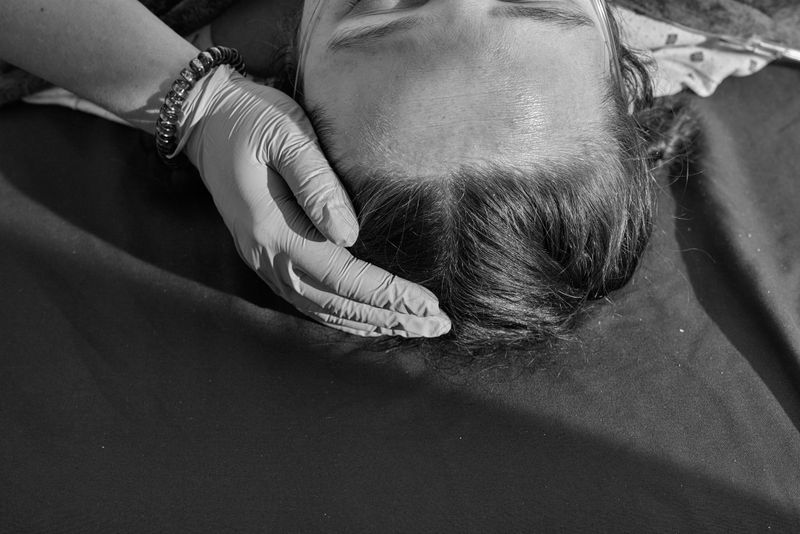Safe Haven
-
Dates2022 - Ongoing
-
Author
- Location College Park, United States
I began this work intending to document the opening of an abortion clinic in post-Roe America. But once inside, my focus shifted as I found not only history unfolding, but an intricate web of tenderness, resilience, and love.
I began this work intending to document the opening of an abortion clinic in post-Roe America. But once inside, my focus shifted. What I found at Partners in Abortion Care in Maryland was not only history unfolding, but an intricate web of tenderness, resilience, and love.
Following the Dobbs decision in 2022 and through 2023, I witnessed moments that resisted the sterile, detached image so often associated with medical spaces. Partners specializes in later-stage abortion—a procedure that has become increasingly rare, often inaccessible, and in many states, impossible. I am the first photographer granted access to document its intensive three-day process.
Here, in a small cluster of rooms, the political collided with the profoundly personal. As states stripped away access, this clinic stood as a beacon—an urgent reminder of what healthcare can be when compassion is not rationed, when care extends beyond the boundaries of medicine.
The atmosphere was layered: a quiet hum of machines, the soft shuffle of slippers on linoleum, the hushed cadence of voices in the hallway. Outside, protests gathered, their chants spilling through the walls. Inside, someone braided a patient’s hair. A nurse squeezed a hand for just a moment longer than protocol required. These gestures—small, almost invisible—were acts of defiance against a culture that seeks to reduce this care to numbers, headlines, or talking points.
The clinic became a sanctuary. Within its walls, staff and patients navigated uncertainty together: staff with patients, staff with one another, patients with each other. These relationships dismantled the usual hierarchies of a medical office. Patience replaced urgency; listening replaced assumption. The result was an environment where human connection was as critical as any clinical skill.
As I photographed, the scope of the project expanded beyond procedure into something more intimate—an unconventional love story. Love for patients, love among colleagues, love despite grief. Love for bodily autonomy. Love that persisted even as threats loomed: the recent election of Donald J. Trump, the prospect of a federal abortion ban, the constant shadow of legal and social backlash.
This was not a love that ignored the reality of the work—it lived alongside it. It existed in the waiting, in the listening, in the care taken to ensure that every patient left knowing they were seen.
My photographs hold these moments: a nurse’s hand resting on a shoulder, the warmth of shared laughter in the midst of fear, a glance exchanged that says, You are safe here. They are fragments of a larger truth: that in places where the political climate seeks to erode care, care adapts, deepens, and survives.
This work is as much about the preservation of reproductive rights as it is about the preservation of dignity. It is about the ways love can endure under siege and how community can form in the most unlikely of places. In the face of shrinking freedoms, this clinic offers an image of what is still possible—what must remain possible.
Through these photographs, I hope to offer more than documentation. I hope to create an archive of trust, intimacy, and defiance. An account of a community bound not just by shared work, but by shared belief in the right to decide, the right to heal, the right to be held with care.
